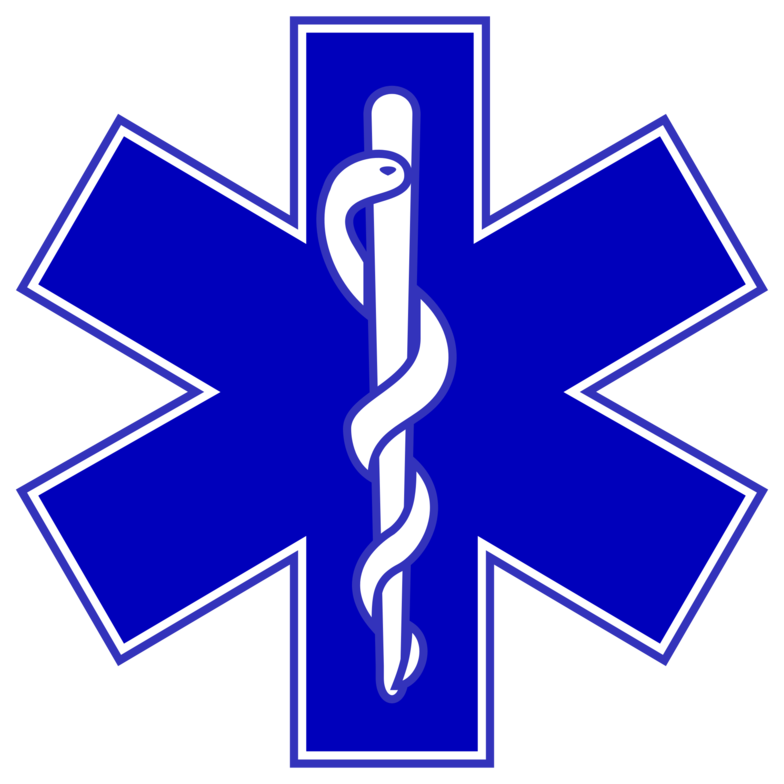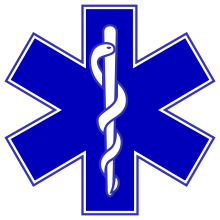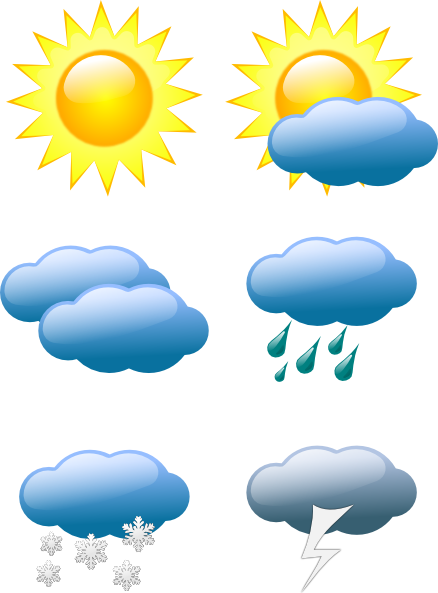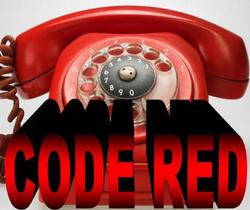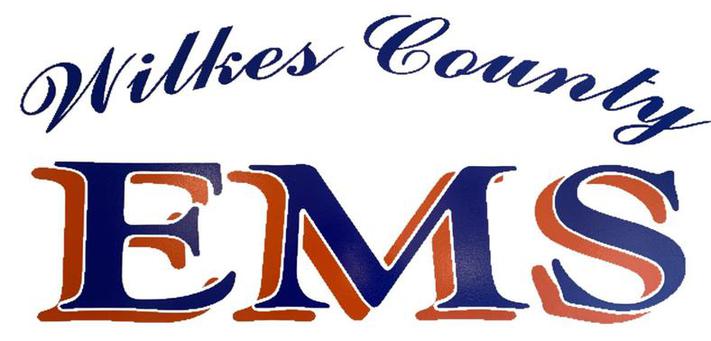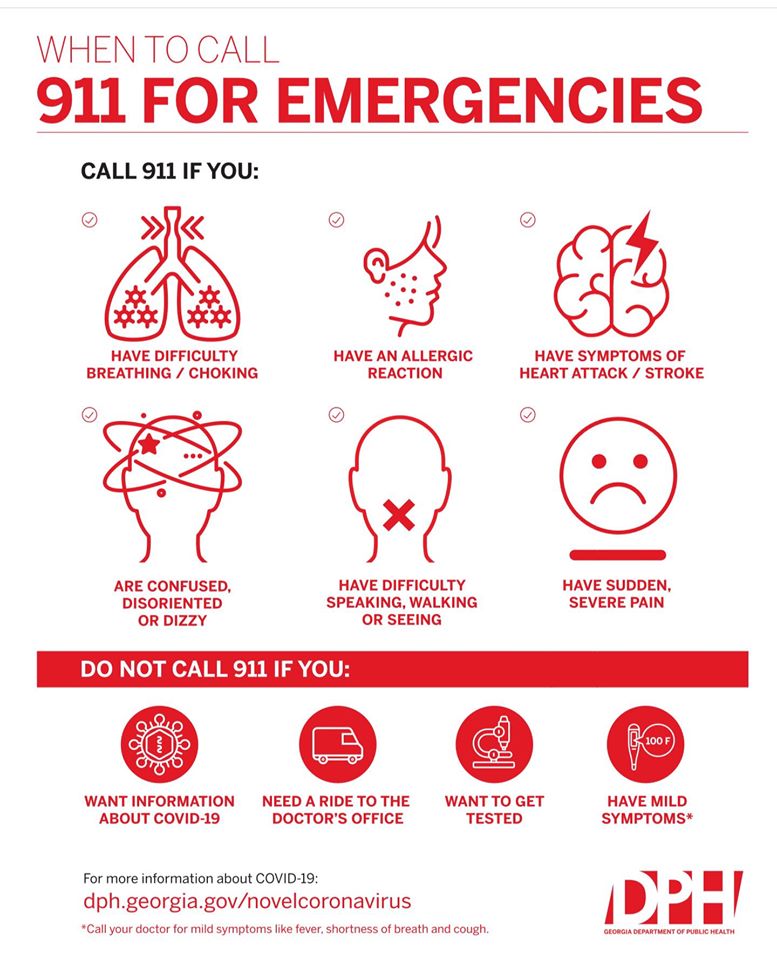- Wilkes County Emergency Services
- Offices of EMS/EMA/Coroner
Our Services
- Wilkes County Emergency Medical Services, Emergency Management Agency and Office of the Coroner are all departments of Wilkes County Emergency Services.
- Our ambulances are staffed as Advanced Life Support, ensuring the citizens of our community receive the highest level of care possible in the pre-hospital setting.
How to Make Your Own Ready Kit
Make your own Ready kit with the items on the checklist below. Most of the items are inexpensive and easy to find, and any one of them could save your life. Headed to the store? Download a printable version to take with you. Once you take a look at the basic items, consider what unique needs your family might have, such as supplies for pets, seniors or family members with special needs. Add those items to your kit and start packing it today. Download the Ready Georgia mobile app to have this checklist with you all the time.
Or, for a customized emergency plan that will include a detailed checklist with items that are specific to you and your family’s needs, as well as a communications plan to help you reconnect after an emergency, create a user profile now.
Recommended Items
•Water. One gallon per person per day, for at least 3 days, for drinking and hygiene
•Food. At least a 3-day supply of non-perishable food
•Can opener. For food, if kit contains canned food
•Radio. Battery-powered or hand crank radio and a NOAA Weather Radio with tone alert, and extra batteries for both
•Flashlight and extra batteries
•First aid kit
•Whistle. To signal for help
•Face mask. To help filter contaminated air and plastic sheeting and duct tape to shelter in place
•Moist towelettes, garbage bags and plastic ties. For personal hygiene
•Wrench or pliers. To turn off utilities
•Local maps
Additional Items
•Prescription medications and glasses
•Infant formula and diapers
•Pet food, extra water, pet supplies, toys and vaccination forms.
•Important family documents such as copies of insurance policies, identification and bank account records in a waterproof, portable container
•Cash or traveler’s checks and change
•Emergency reference material such as a first aid book or information from Ready America
•Sleeping bag or warm blanket for each person. Consider adding bedding in cold weather.
•Complete change of clothing. Include a long sleeved shirt, long pants and sturdy shoes. Consider adding clothing in cold weather.
•Household chlorine bleach and medicine dropper
•Fire extinguisher
•Matches in a waterproof container
•Feminine supplies and personal hygiene items
•Mess kits, paper cups, plates, plastic utensils, paper towels•Paper and pencil
•Books, games, puzzles or other activities for children.
Get Ready for Floods and Flash Floods
In September 2009, North Georgia experienced what scientists call one of the worst floods in the country in the last 100 years. Almost half of the state's annual rainfall of 50 inches fell in some areas in only 24 hours. Ten people lost their lives, and the state insurance commissioner estimated the resulting damage to cost $250 million.
Statistically, the flood was worse than a 500-year flood. Seventeen counties, including Carroll, Catoosa, Chattooga, Cherokee, Clayton, Cobb, Crawford, DeKalb, Douglas, Forsyth, Fulton, Gwinnett, Newton, Paulding, Rockdale, Stephens and Walker, received Federal disaster declarations.
Floods are the second most common and widespread of all natural disasters, after fire. In Georgia, many communities experience some kind of flooding
after spring rains or heavy thunderstorms. Floods can be slow or fast rising but generally develop over a period of days. Dam failures are potentially the
worst flood events. When a dam fails, a gigantic quantity of water is suddenly let loose downstream, destroying anything in its path.
Flash floods usually result from intense storms dropping large amounts of rain within a brief period. They occur with little or no warning and can reach full peak in only a few minutes. Communities particularly at risk are those located in low-lying areas, near water, or downstream from a dam.
Get ready for this type of weather event by reviewing the tips below. You can also watch an American Sign Language video with details on how to prepare
for floods, the number one weather-related killer.
Prepare for Flooding
•Know your area's flood risk – if unsure, call your local emergency management agency.
•Property insurance does not typically cover flood damage. Talk to your insurance provider about your policy and consider if you need additional coverage. The National Flood Insurance Program is designed to provide reasonable flood insurance in exchange for the careful management of flood-prone areas by local communities. The program, administered by FEMA, is available in hundreds of participating Georgia communities. Visit FEMA Business NFIP for
more information.
•Reduce potential flood damage by raising your furnace, water heater, and electric panel if they are in areas of your home that may be flooded.
Plan to Evacuate
•Get a disaster supplies kit and prepare a portable Ready kit in case you have to evacuate. Plan how you will leave and where you will go if
you are advised to evacuate.
•If you have a car, fill the gas tank.
•If you do not have a car, plan alternate means of evacuating.
•Move your furniture and valuables to higher floors of your home.
Stay Informed
•If it has been raining hard for several hours, or steadily raining for several days, be alert to the possibility of a flood.
•Closely monitor a local radio station, TV station or NOAA Weather Radio for flood information.
•Follow the instructions of local officials. If advised to evacuate, do so immediately.
•Do not drive around barricades. They are there for your safety.
•NEVER drive through standing water. It only takes two feet of water to float a full-sized automobile. •More than half of flood victims are in vehicles swept away by moving water.
•Move to higher ground away from rivers, streams, creeks, and storm drains.
•Stay out of floodwaters if possible. The water may be contaminated or electrically charged. However, if your car stalls in rapidly rising waters, get out immediately and seek higher ground. •Six inches of fast-moving water can knock a person off his or her feet
•Stay away from downed power lines to avoid the risk of electric shock or electrocution.
•Do not return to your home until local authorities say it is safe. Even after floodwaters recede, roads and bridges may be weakened and could collapse. Buildings may be unstable, and drinking water may be contaminated. Use common sense and exercise caution
Get Ready for Thunderstorms and Lightning
A severe thunderstorm in June 2003 brought hail the size of golf balls, rain that swelled creeks, rivers and lakes, and winds that downed trees and power lines. A 250 ft. galvanized steel cell phone tower atop Sand Mountain in Dade County was toppled by extremely high winds, and concrete pilings that had been buried 29 feet underground were p
ulled up like stubborn weeds.
All thunderstorms are dangerous because they can produce strong winds, lightning, tornadoes, hail and flash flooding. The typical thunderstorm is 15 miles in diameter and lasts an average of 30 minutes.
Georgia's greatest threats from severe thunderstorms are damaging straight-line winds and large hail. Straight-line winds can reach speeds in excess of 100 mph and produce damage similar to a tornado. These winds occur about 19 days per year in Georgia and are most common in the spring and summer months, peaking in July.
Lightning is a deadly by-product of thunderstorms, occuring mostly during the warmer months of June through September. Lightning kills an average of 100 people a year throughout the United States. Protect yourself and your family by getting prepared today. You can find an American Sign Language video here with the steps to get ready for threats associated with thunderstorms and lightning.
Prepare for Thunderstorms and Lightning
•Familiarize yourself with the terms that are used to identify a thunderstorm hazard, including understanding the difference between a severe thunderstorm watch and a severe thunderstorm warning. •A thunderstorm watch means there is a possibility of a thunderstorm in your area.
•A thunderstorm warning means a thunderstorm is occurring or will likely occur soon. If you are advised to take shelter, do so immediately.
•Remove dead or rotting trees and branches that could fall and cause injury or damage during a severe thunderstorm.
•Remember the 30/30 lightning safety rule: Go indoors if, after seeing lightning, you cannot count to 30 before hearing thunder. Stay indoors for 30 minutes after hearing the last clap of thunder.
Make a Thunderstorm Plan
•If a thunderstorm is likely in your area, postpone outdoor activities.
•Secure outdoor objects that could blow away or cause damage.
•Shutter windows and secure outside doors. If shutters are not available, close window blinds, shades, or curtains.
•Avoid showering or bathing during a thunderstorm. Plumbing and bathroom fixtures can conduct electricity.
•Watch for darkening skies, lightning, increasing winds.
•Go quickly inside a home, building, or hard top automobile, if possible.
•If shelter is not available, go to the lowest area nearby and make yourself the smallest target possible but do not lie flat on the ground.
•If on open water, get to land and shelter immediately.
•Things to avoid include: •Tall, isolated tree in an open area.
•Hilltops, open fields, the beach, a boat on the water, isolated sheds or other small structures in open areas.
•Anything metal—tractors, farm equipment, motorcycles, golf carts, golf clubs, and bicycles
Stay Informed
•Listen to battery-operated NOAA Weather Radio or radio for the latest updates.
•Do not use electrical items such as computers or television sets as power surges from lightning can cause serious damage.
•A corded telephone should only be used in an emergency, but cordless phones and cell phones are safe to use.
Weather Aware
Advance warning is the most powerful preparedness tool for severe weather. Every family should have one or more methods for receiving severe weather alerts, and at least one of these should have an audible alert to wake you in case the alert comes in the middle of the night.
There are numerous methods to receive weather watches, warnings and advisories. Examples include:
•NOAA Weather Radio: Watches and Warnings issued by National Weather Service (NWS) air on these radios.
•Television Stations: Local or national news stations monitor and broadcast weather alerts.
•AM/FM Radio: Radio stations are required to air Emergency Alert System messages.
•Smartphone Applications: Numerous free and paid smartphone applications have been created, notifying the public of severe weather. Some of these applications use the GPS tracking on your phone and will notify you of severe weather warnings based upon your location.
•Text Message Alerts: Some television stations use text message alerts for specific areas.
•Alert FM Receiver: Similar to a NOAA Weather Radio, but relays the message from FM Stations.
•County Alert Systems: Some counties use outdoor warning sirens while others may use a telephone notification system. Contact your local EMA director to find out what warning system is used.
•Wireless Emergency Alerts (WEA): WEA are emergency messages sent by authorized government alerting authorities through your mobile carrier. The alert system requires no need to download an app nor subscribe to a service. The WEA message will usually provide the category and time, the agency issuing the alert and what action you should take.
American Heart Association
American Red Cross
BE PREPARED FOR THE UNEXPECTED
WELCOME to Our Page!
Here are some LINKS you may find useful:
Headquarters Offices (706) 678-7837
105 Marshall Street Fax (706)678-1858
Station 2 Tignall Road Offices (706) 678-4001
2nd Fax (706) 678-4272
REGISTER FOR CODE RED TODAY! CLICK THE LINK BELOW:
Proud Member of the Washington-Wilkes
Chamber of Commerce
Now offering online payments!!
CLICK on "PAY ONLINE"
above left


